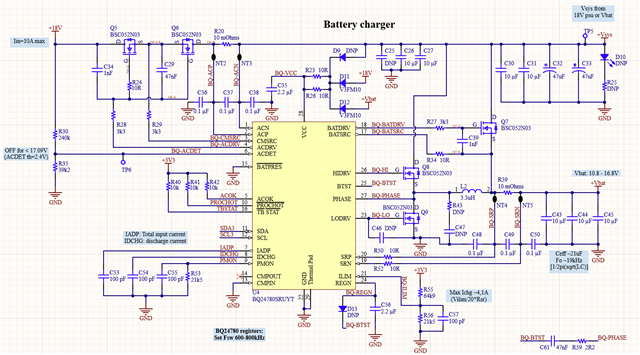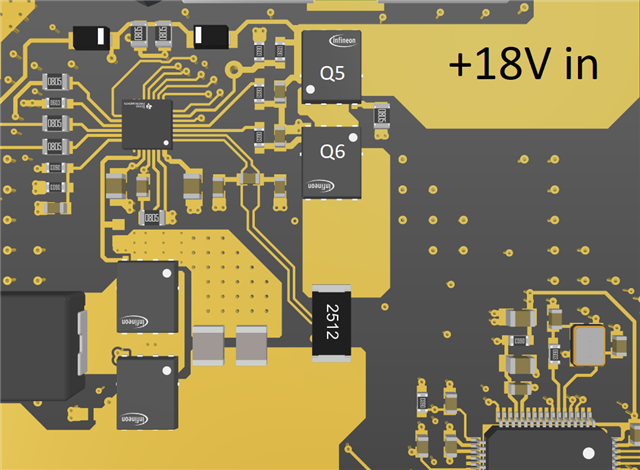Other Parts Discussed in Thread: CSD17308Q3, BQ24780
Tool/software:
Hello,
We have designed a charger for a 4S Li-ion battery based on the BQ24780S IC, mostly following the relevant EVM design.
The input is from an 18V @ 8A buck converter (on the same PCB, hence why there is no snubber on the input), the system output requires around 5A nominal, 8A max.
ACDET threshold was set to ~17.09V to make sure that there are no interruptions due to any short voltage drops and the voltage at ACDET input measures ~2.53V at idle as expected.
The issue we have is that the mosfet drivers for the ACDRV seem to be unable to drive the transistors properly.
With the ACFETs removed the ACDRV voltage works as expected (~6V more than the input), but as soon as the mosfets are soldered it drops near 0V even without a load or battery connected.
I have tried replacing R28,29 with 4k7 resistors and replacing the IC, but there is no significant change.
I assume that the ACDET/ACDRV functionality is implemented entirely in hardware, so it can't be a firmware issue, correct?
Could you please check out the schematic below and let me know if I am missing something?
I would appreciate any feedback.
Thank you in advance,
Anastasios



